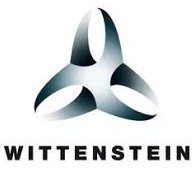What is An RTOS?
"Provide a free product that surpasses the quality and
service demanded by users of commercial alternatives"
Dedicated FreeRTOS developers have been working in close partnership with the world's
leading chip companies for more than 15 years to provide you
market leading,
commercial grade, and completely free high quality
RTOS and tools ...but what is an RTOS?
This page starts by defining an operating system, then refines this to define
a real time operating system (RTOS), then refines this once more to define
a real timer kernel (or real time executive).
See also the FAQ item "why an RTOS" for information on when and why it
can be useful to use an RTOS in your embedded systems software design.
What is a General Purpose Operating System?
An operating system is a computer program that supports a computer's basic
functions, and provides services to other programs (or applications)
that run on the computer.
The applications provide the functionality that the user of the computer
wants or needs. The services provided by the operating system make writing
the applications faster, simpler, and more maintainable.
If you are reading this web page, then you are using a web browser (the application program
that provides the functionality you are interested in), which will itself
be running in an environment provided by an operating system.
What is an RTOS?
Most operating systems appear to allow multiple programs to execute at the
same time. This is called multi-tasking. In reality, each processor core
can only be running a single thread of execution at any given point in time.
A part of the operating system called the
scheduler is responsible for deciding which program to run when, and provides
the illusion of simultaneous execution by rapidly switching between each program.
The type of an operating system is defined by how the scheduler decides which
program to run when. For example, the scheduler used in a multi user operating
system (such as Unix) will ensure each user gets a fair amount of the
processing time. As another example, the scheduler in a desk top operating
system (such as Windows) will try and ensure the computer remains responsive
to its user. [Note: FreeRTOS is not a big operating system, nor is it
designed to run on a desktop computer class processor, I use these examples purely because
they are systems readers will be familiar with]
The scheduler in a Real Time Operating System (RTOS) is designed to provide
a predictable (normally described as deterministic) execution pattern.
This is particularly of interest to embedded systems as embedded systems often have real
time requirements. A real time requirements is one that specifies that the embedded system
must respond to a certain event within a strictly defined time (the deadline).
A guarantee to meet real time requirements can only be made if the behaviour of the operating
system's scheduler can be predicted (and is therefore deterministic).
Traditional real time schedulers, such as the scheduler used in FreeRTOS,
achieve determinism by allowing the user to assign a priority to each
thread of execution. The scheduler then uses the priority to know which
thread of execution to run next. In FreeRTOS, a thread of execution is called
a task.
What is FreeRTOS?
[see also "more about FreeRTOS"]
FreeRTOS is a class of RTOS that is designed to be small enough to
run on a microcontroller - although its use is not limited to
microcontroller applications.
A microcontroller is a small and resource constrained
processor that incorporates, on a single chip, the processor itself, read only
memory (ROM or Flash) to hold the program to be executed, and the random access
memory (RAM) needed by the programs it executes. Typically the program is
executed directly from the read only memory.
Microcontrollers are used in
deeply embedded applications (those applications where you never actually
see the processors themselves, or the software they are running) that normally
have a very specific and dedicated job to do. The size constraints, and
dedicated end application nature, rarely warrant the use of a full RTOS
implementation - or indeed make the use of a full RTOS implementation possible.
FreeRTOS therefore provides the core real time scheduling functionality,
inter-task communication, timing and synchronisation primitives
only. This means it is more accurately described as a real time kernel, or
real time executive. Additional functionality, such as a command console
interface, or networking stacks, can then be included with add-on
components.
Copyright (C) Amazon Web Services, Inc. or its affiliates. All rights reserved.
|













